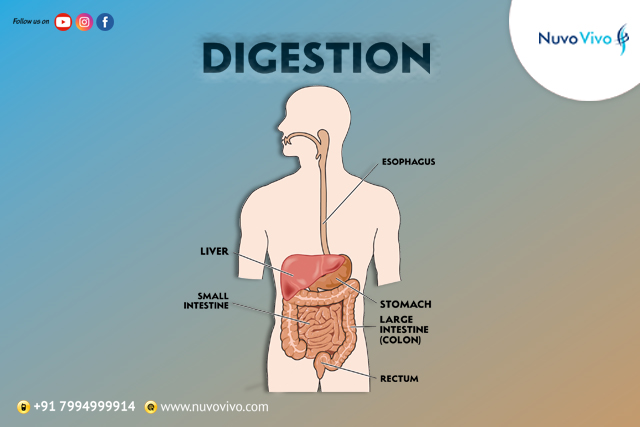Digestion of the food starts in the mouth as it is grind’ed in the mouth, mixing it with saliva. The digestive enzymes in saliva – Amylase & Lipase, breaks down starch & fats respectively right from our mouth itself. (Fun Fact – According to experts, one should chew soft food (eg – watermelon), 5 to 10 times, while you should chew hard food (chapati, meat etc) 25 – 32 times! 30 might look like a big number, but most of us actually chew it nearly 30 times! You don’t believe us? Count and check for yourself! )
The grind’ed food mixed with saliva is then pushed down to the stomach through a muscular tube called the esophagus. Food is pushed down through the esophagus in a wave-like contractions (called peristalsis) of this highly muscular tube. (Fun fact – Peristalsis is so powerful that, even if you are standing on your head, peristalsis will move food to the stomach, defying gravity)
The stomach is a highly muscular organ that churns the food and mixes it with acidic gastric juice, further breaking down the food, forming a thick liquidy form called Chyme.
As chyme reaches the small intestine, it is then mixed with the bile, released by the liver, so as to digest the fats. It is also mixed with other digestive enzymes secreted by Pancreas. The majority of nutrient absorption into the blood happens in the small intestine. The small intestine also has certain bacteria that aids in digestion (Fun fact – Small intestine is more than thrice your height)
The chyme is further pushed into the large intestine, for absorbing the leftover nutrients. The large intestine also absorbs water, as it is pushed down to the rectum as waste. (Fun fact – Large intestine is almost, as long as your height)
The nerve ending in the rectum gives the sensation to defecate and the waste is pushed out as stool. This defecation process is voluntary (hence can be controlled at your will), thanks to the Pelvic floor muscles.

